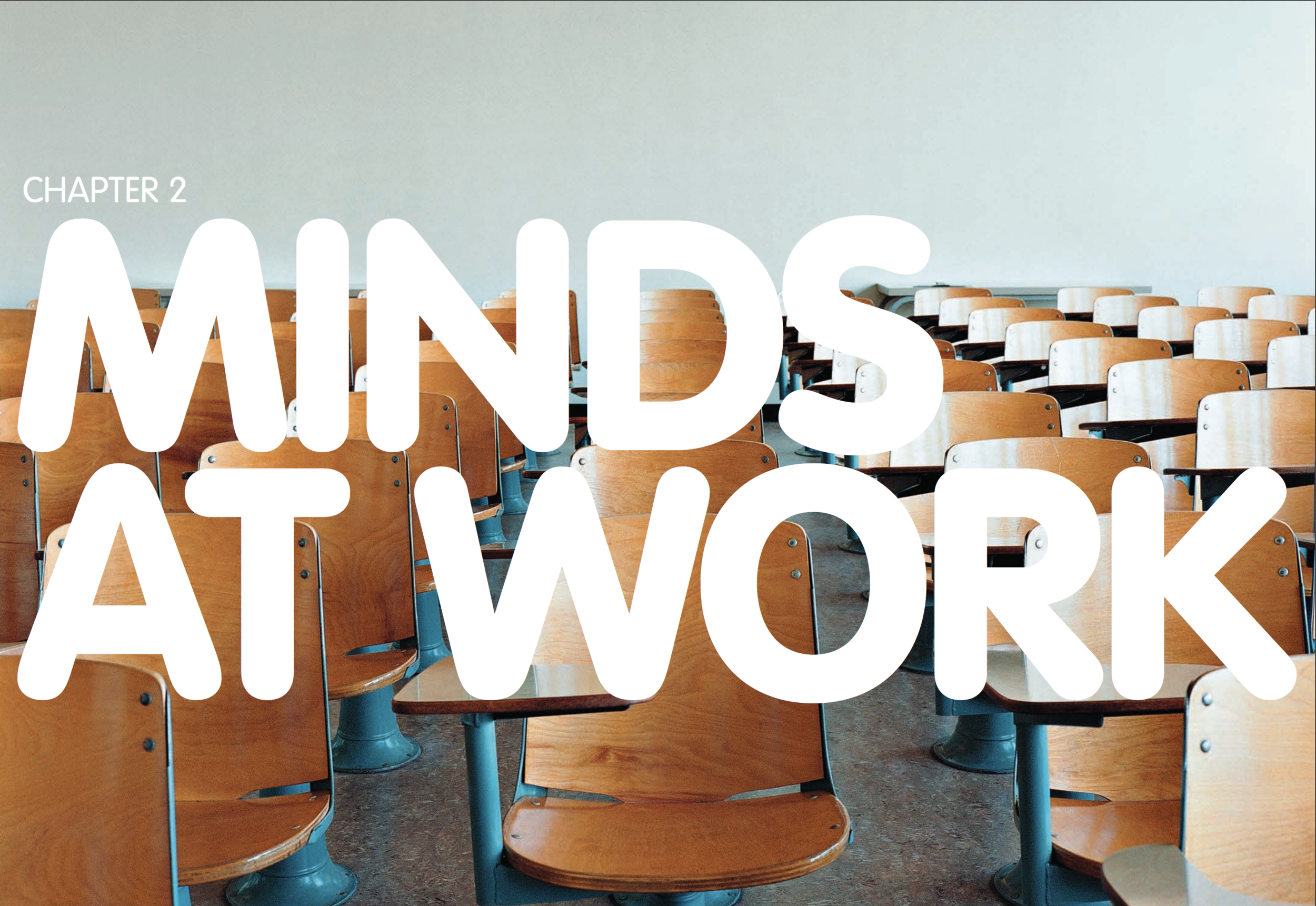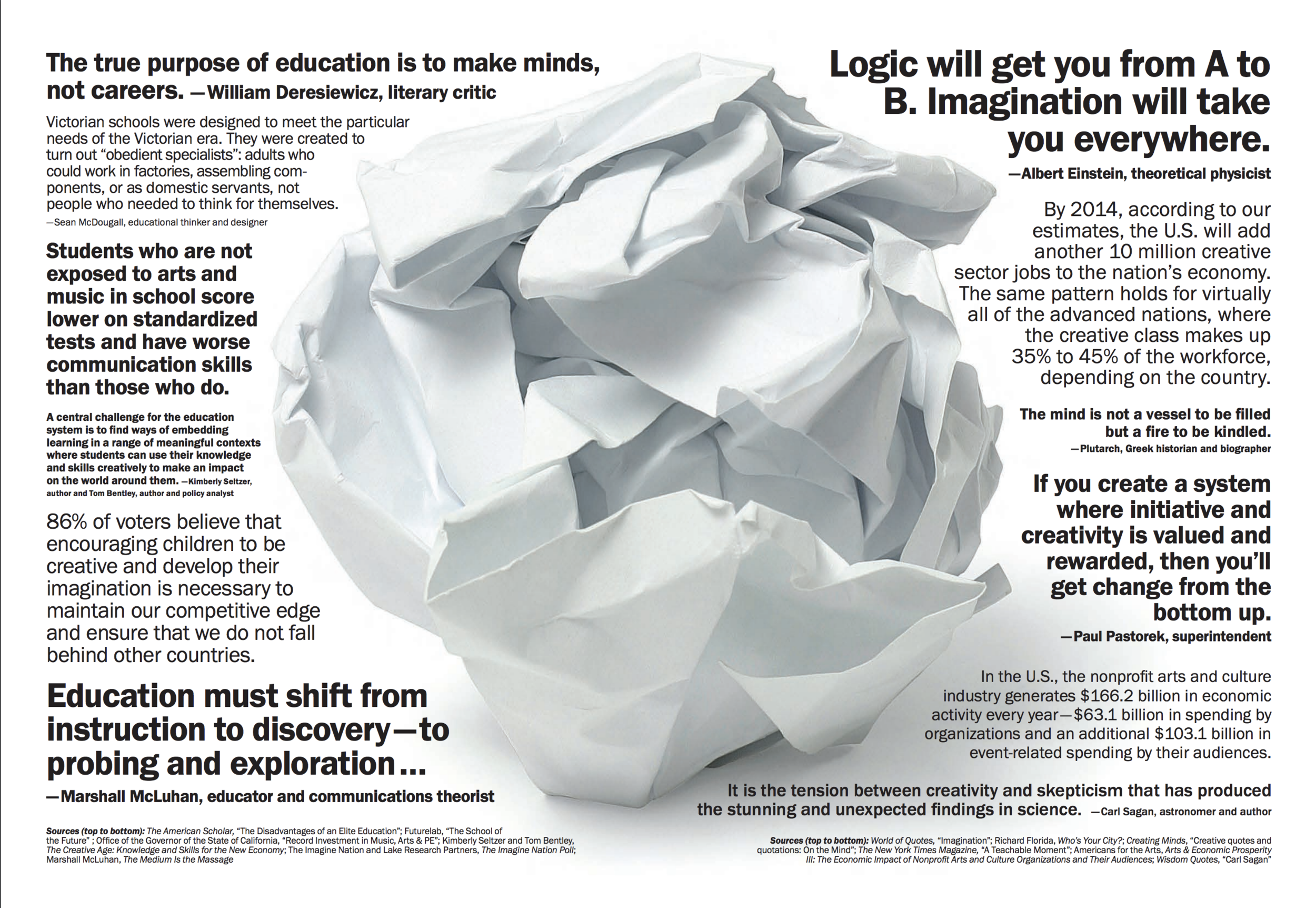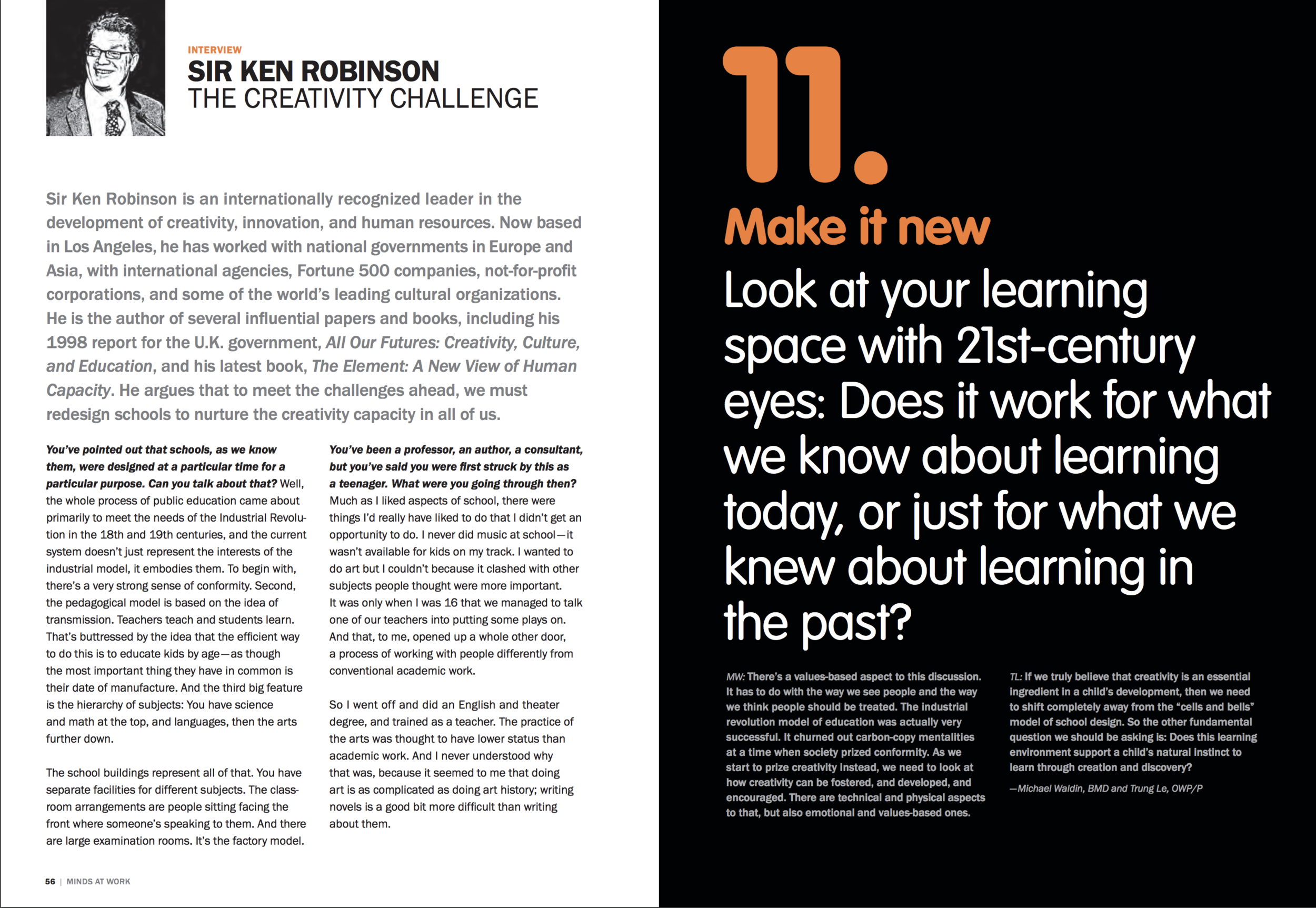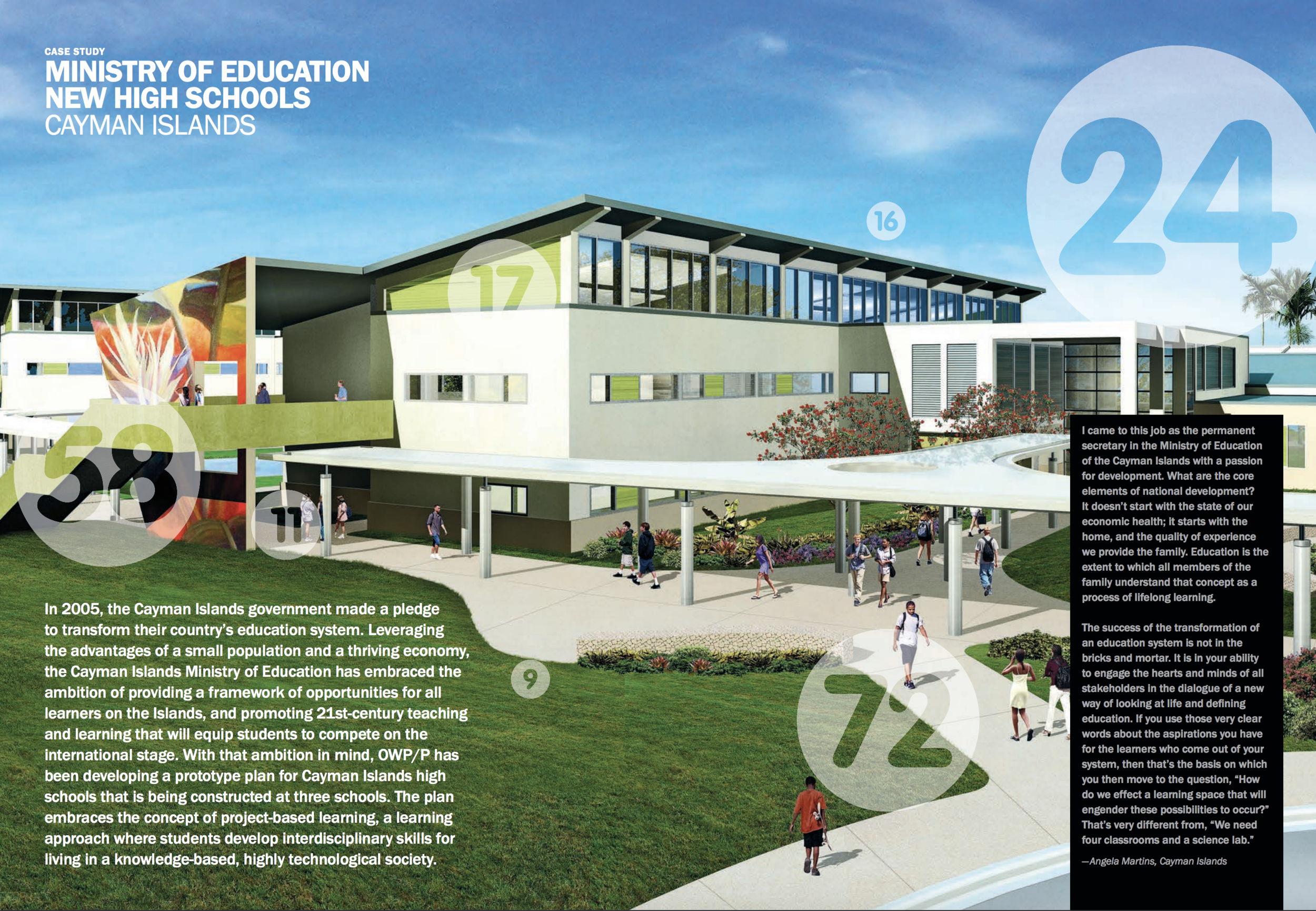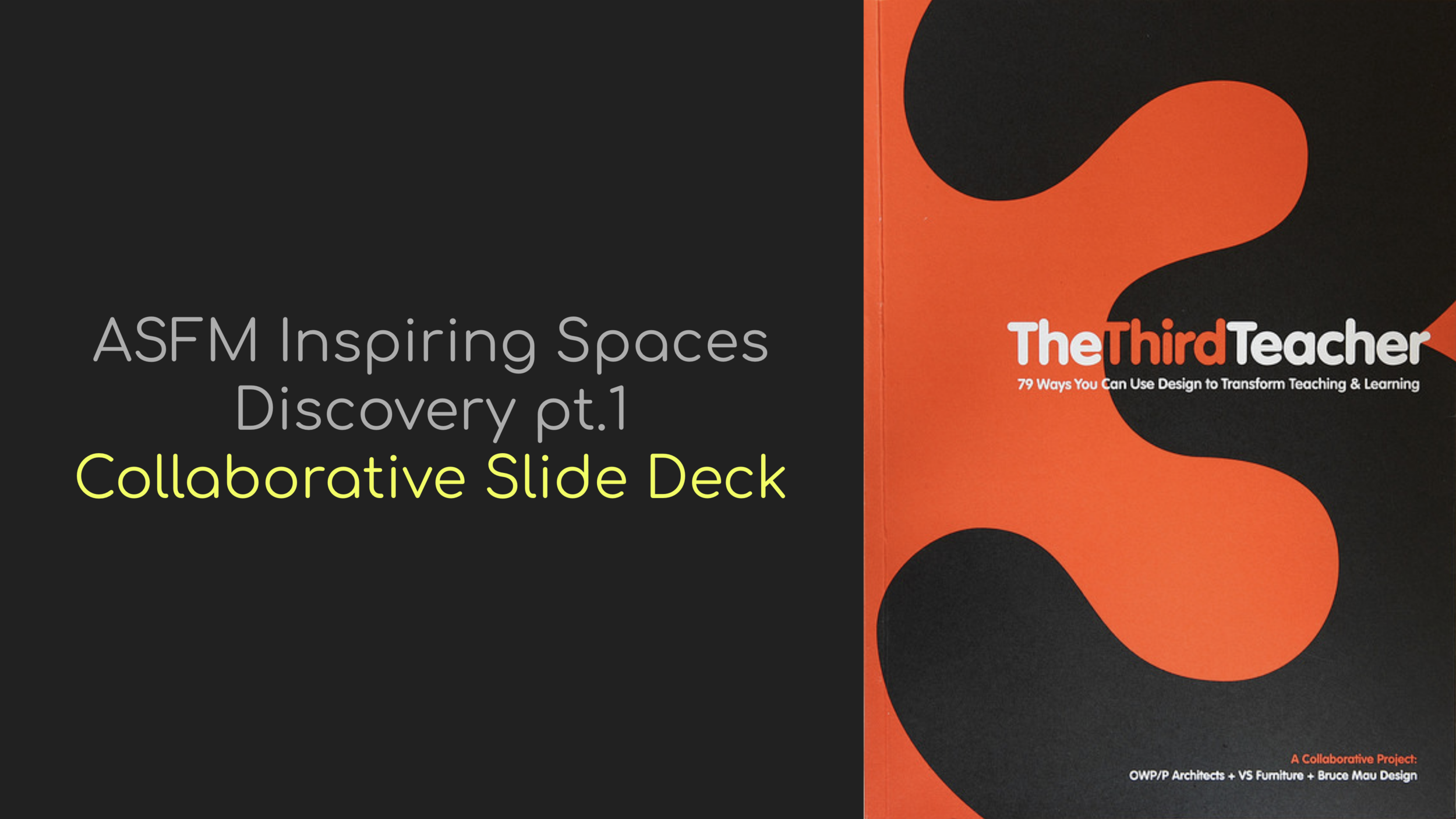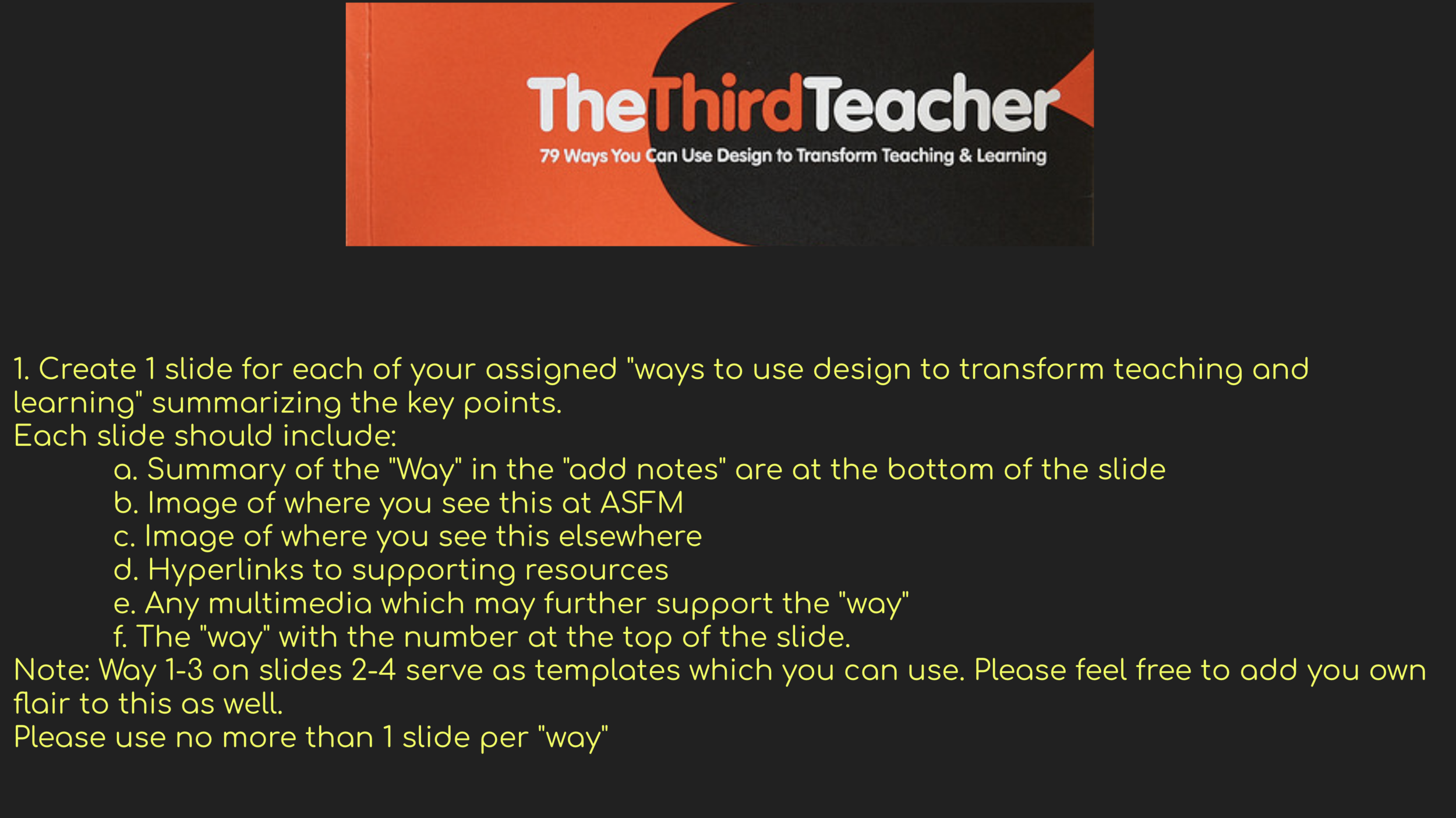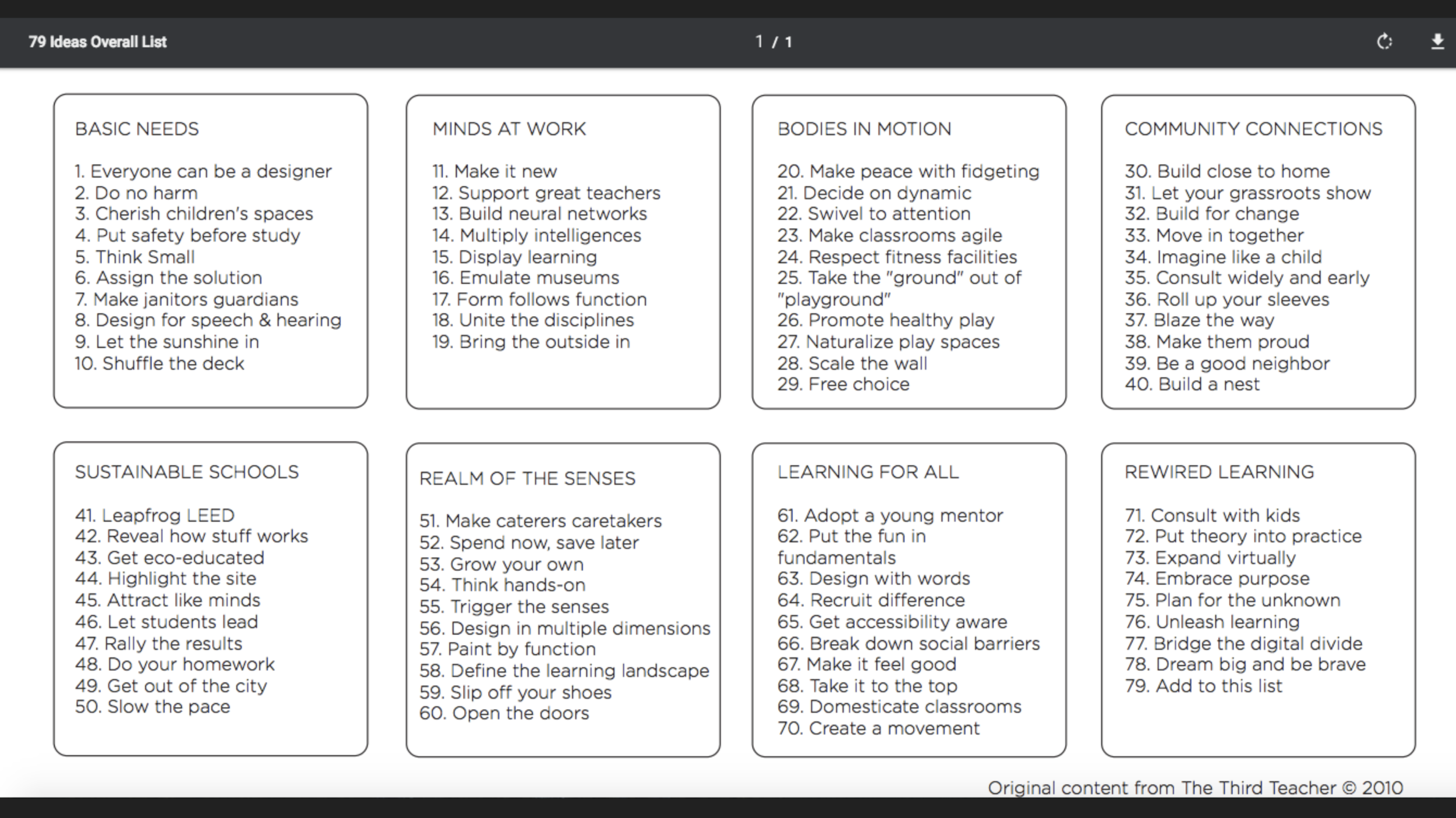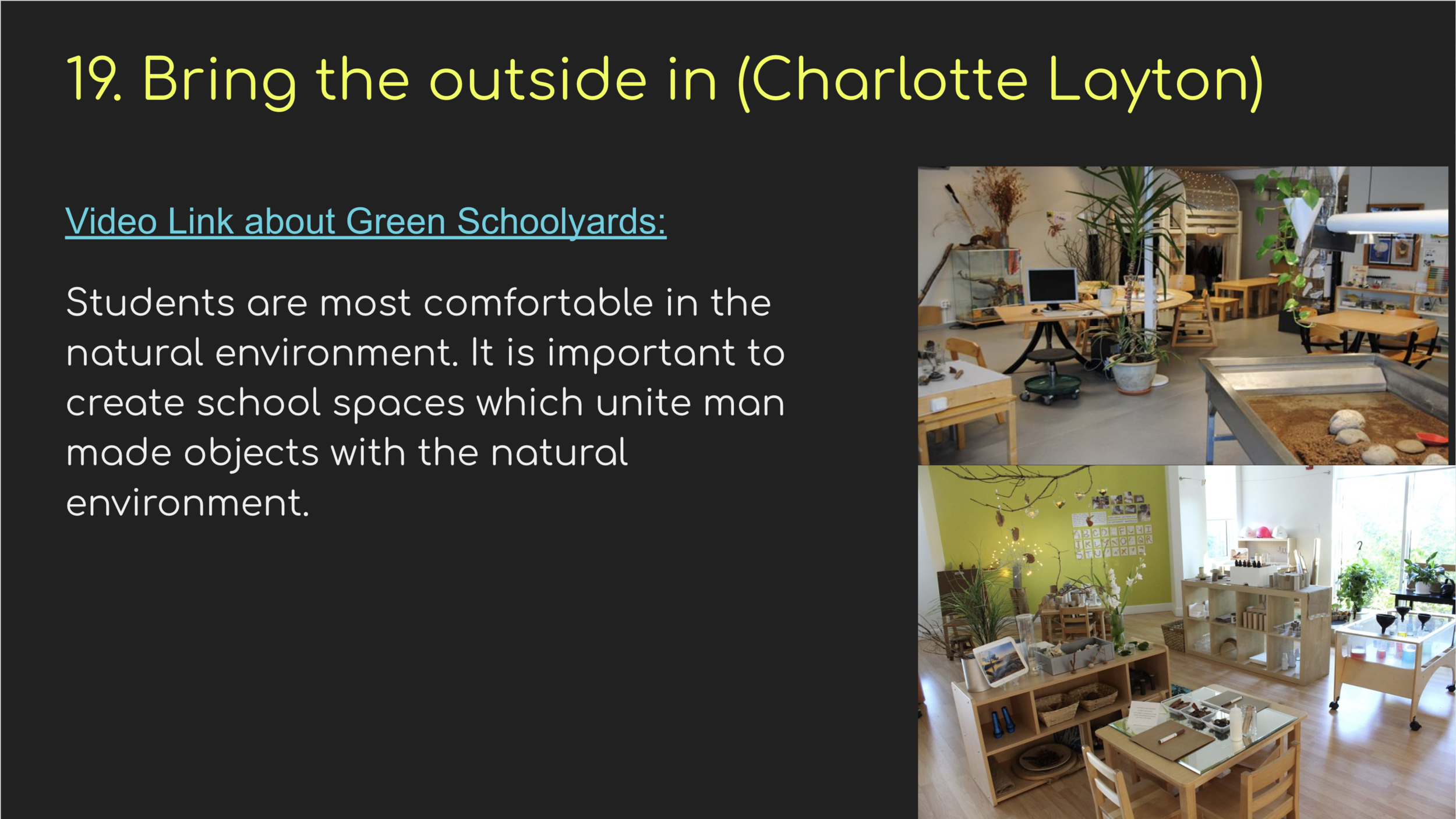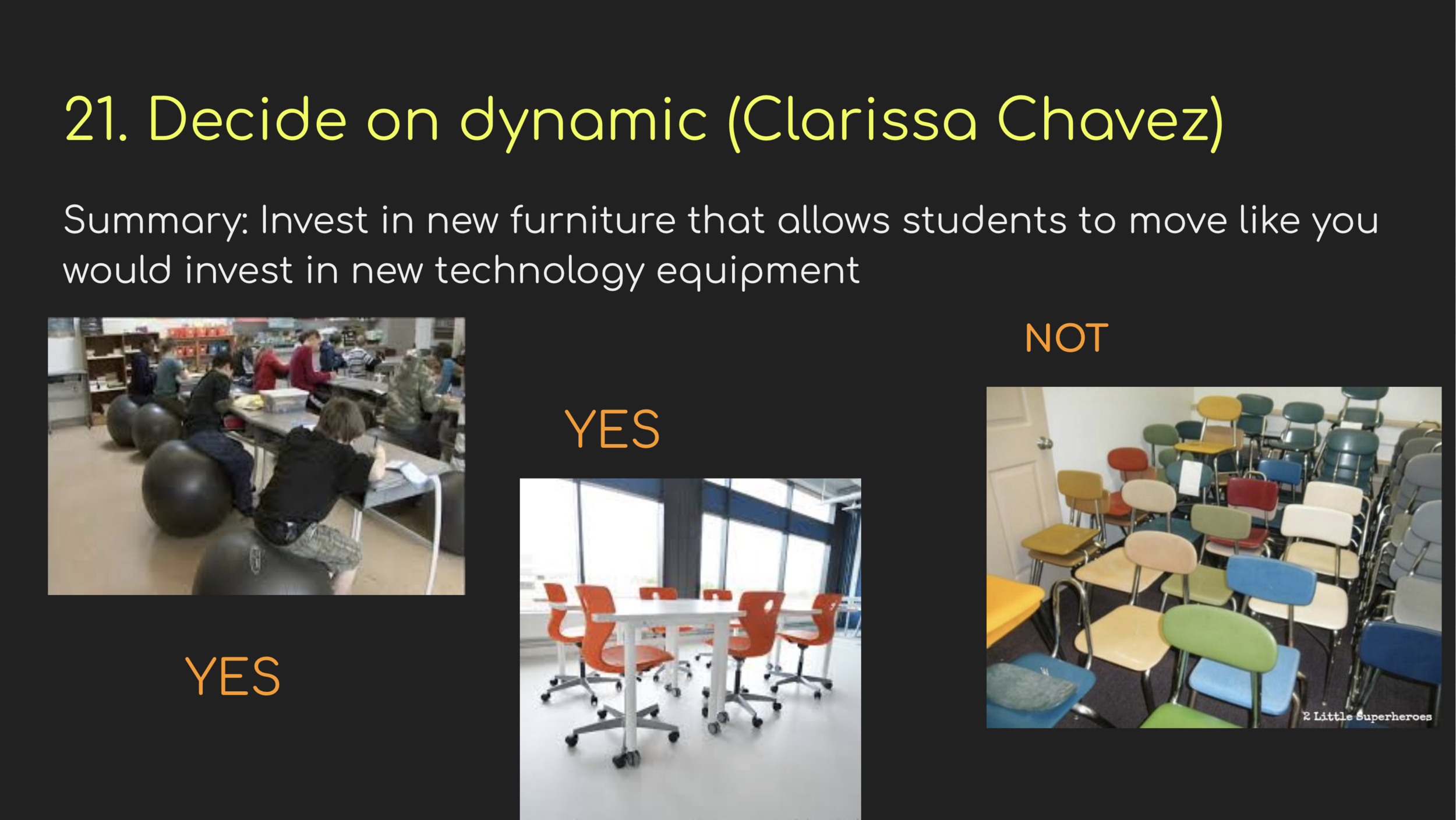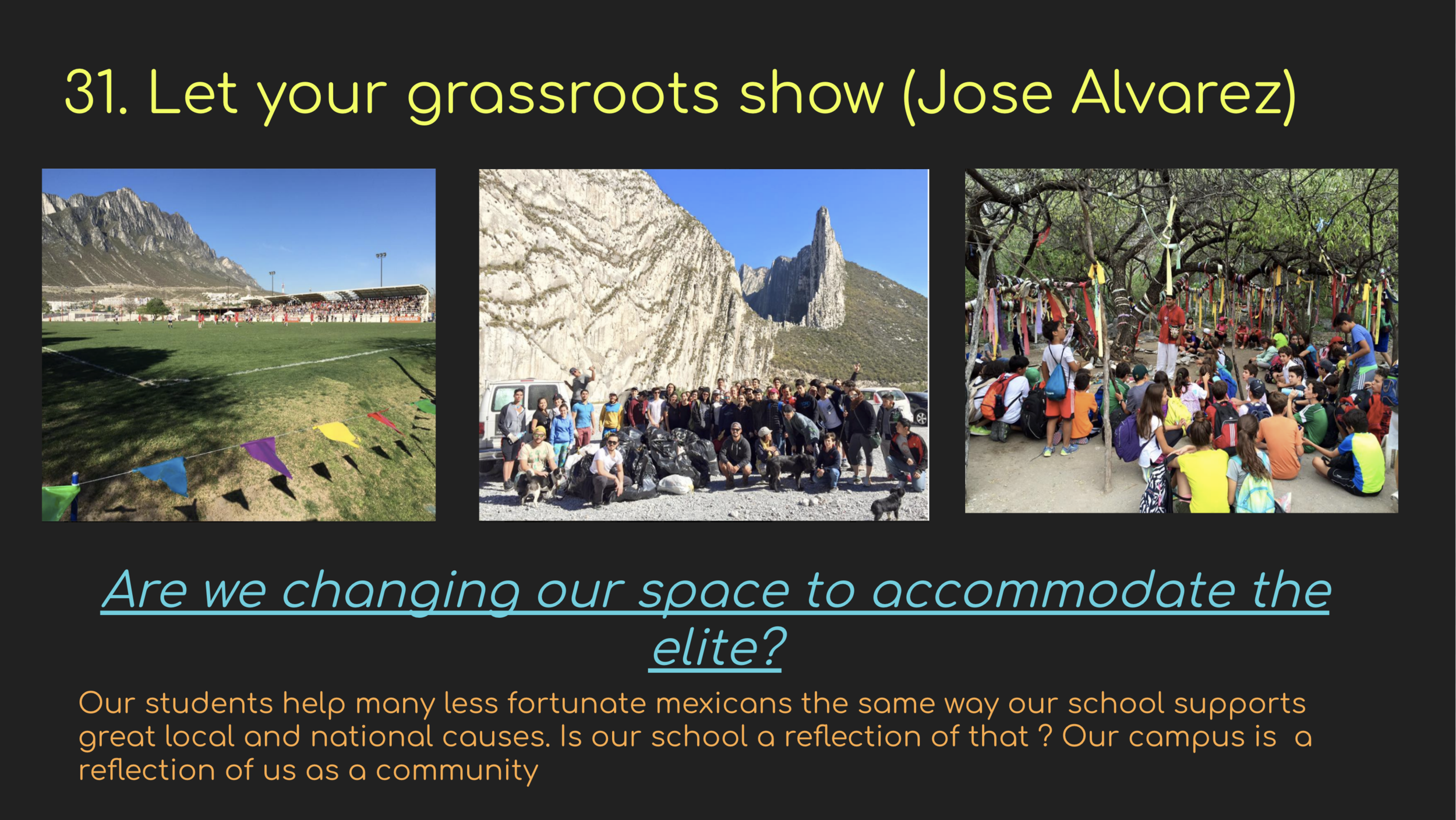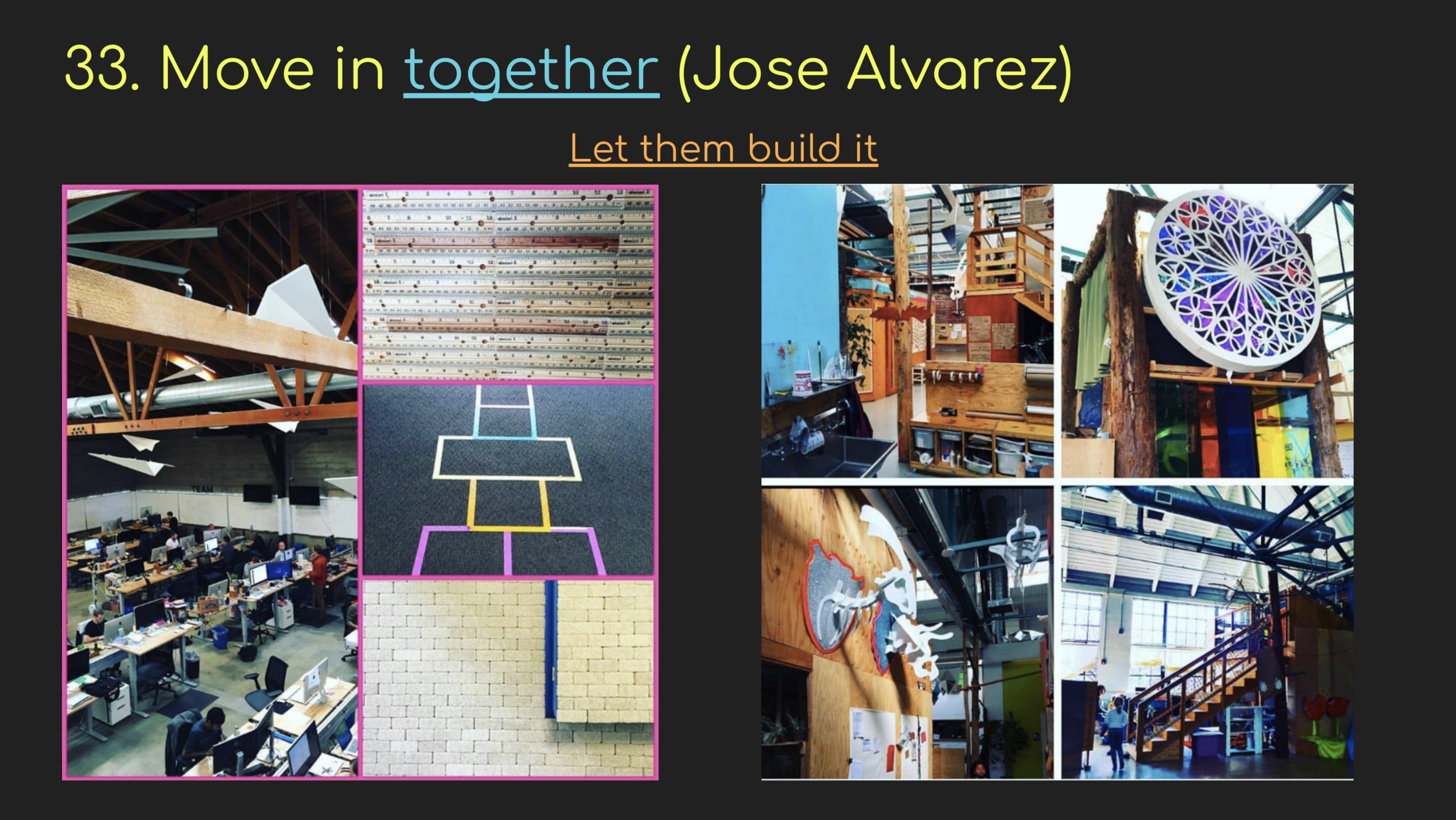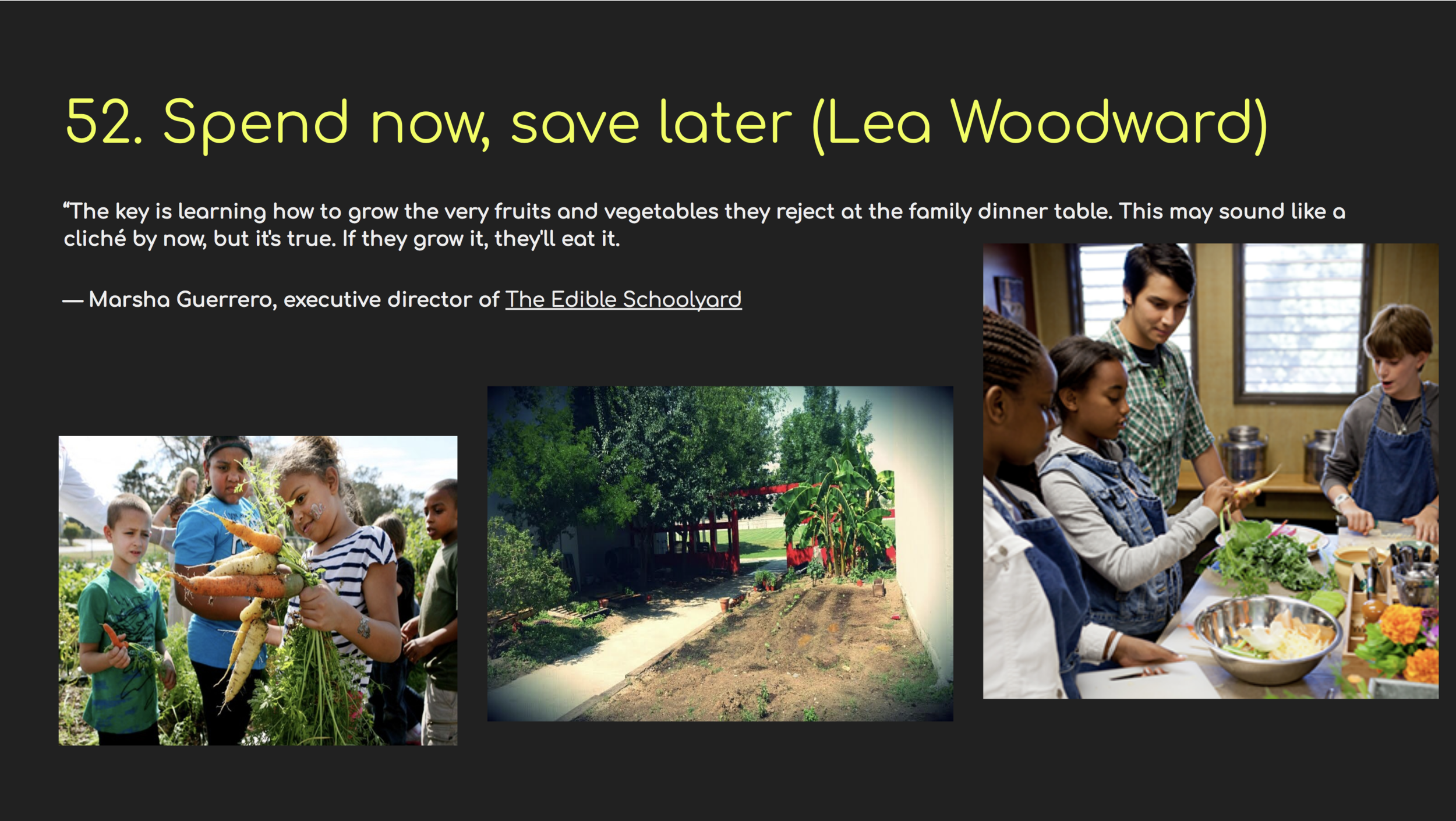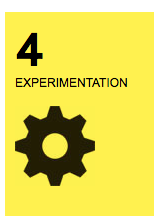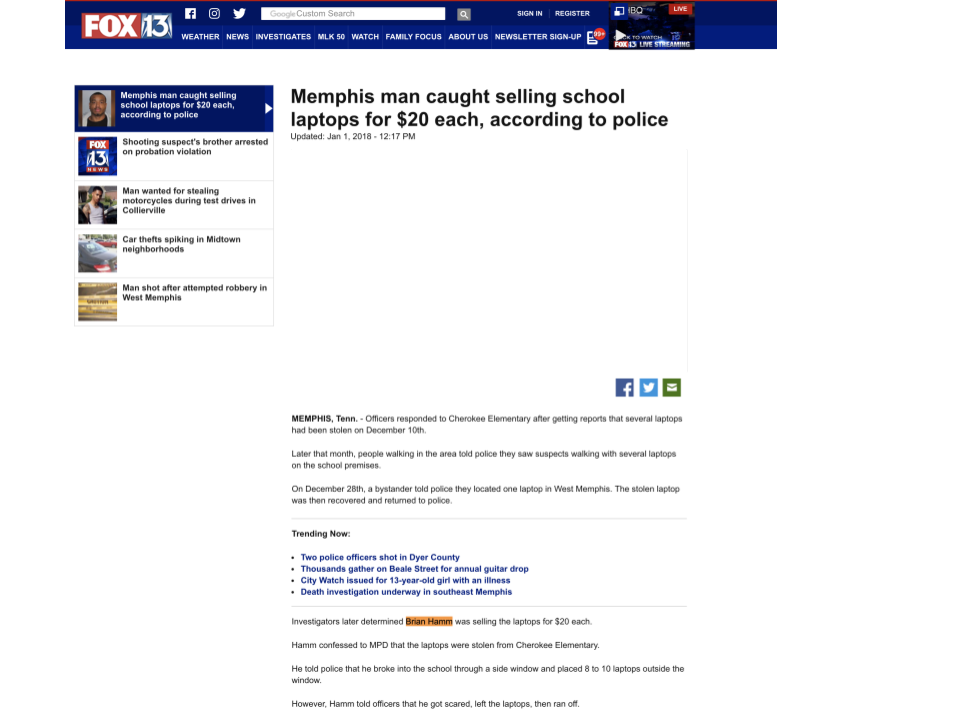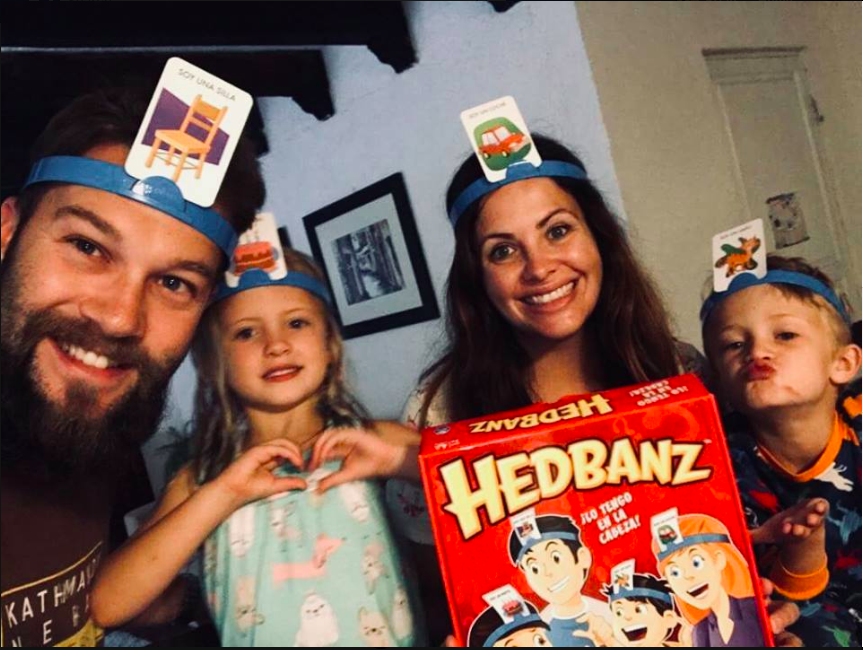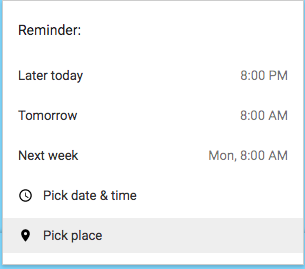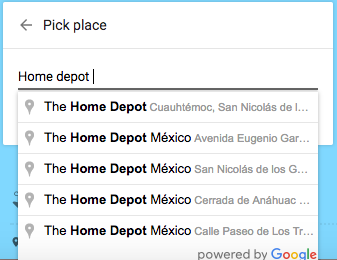In his book Change by Design, Tim Brown frames Discovery as Insight, Observation, and Empathy which has really resonated with our team. For now I am going to expand on "Insight" and reconnect with Observation and Emapthy in a later post. Insight goes beyond traditional research especially with the internet. Today insights are everywhere in digital and analog form and are free. For example, the thoughtless act of a student hacking a space to create a visual learning board offers a priceless insight into how they want to learn and can transition into an installation in a redesigned space.
Another great resource for Insight is the book The Third Teacher: “79 Ways You Can Use Design to Transform Teaching and Learning” which was developed by international team of architects and designers concerned about the failing state of education. Loaded with amazing interviews, case studies, facts, and research to support the transformation of all learning spaces. Featured contributors include, James Dyson, David Suzuki, Sir Ken Robinson, Raffi and Loris Malaguzzi who anchors the publication in the belief that “There are three teachers of children: adults, other children, and their physical environment.” The environment is the “Third Teacher”
At ASFM we have used this resources to gain a pulse into the current status of our spaces as well as invite our team of teachers to a conversation about thinking about spaces differently . A useful activity has been the creation of a collaborative Google Slide Deck which summarizes the 79 ways design can transform teaching and learning, highlights what this looks like on our campus, explores where else this in action, and connects us to an additional resource for further info on he topic. What a great way to start thinking differently about space by being collabortivly creative and active.
If you are unable to get your hands on the book, The Third Teacher Flashcards are a great jump off point when working with your community to redesign your space. We like to print them out, divide them into their 8 chapters, then have participants select the 5-10-15-etc which resonate with them the most. From there we can launch into ideation and creation of prototypes which bring these concepts to life at our school.
When starting the process of redesigning learning spaces a few things are critical. Firstly, a local community to share, learn, and bounce ideas off of. Secondly, if you are able to connect with an outside expert to assist as a mentor, guide, or consultant this is just as valuable a resources as the money you are going to spend on installations. For us David Jakes has been a invaluable asset, guide, and friend who has now become less of a consultant and more of a colleague/friend/mentor. Lastly, resources such at the Third Teacher Book are great to have on hand to spark new ideas, refocus direction, and to invite others to the conversation. I am going to be sharing more of these over the coming posts , I hope you find them as useful as we here at ASFM have.



